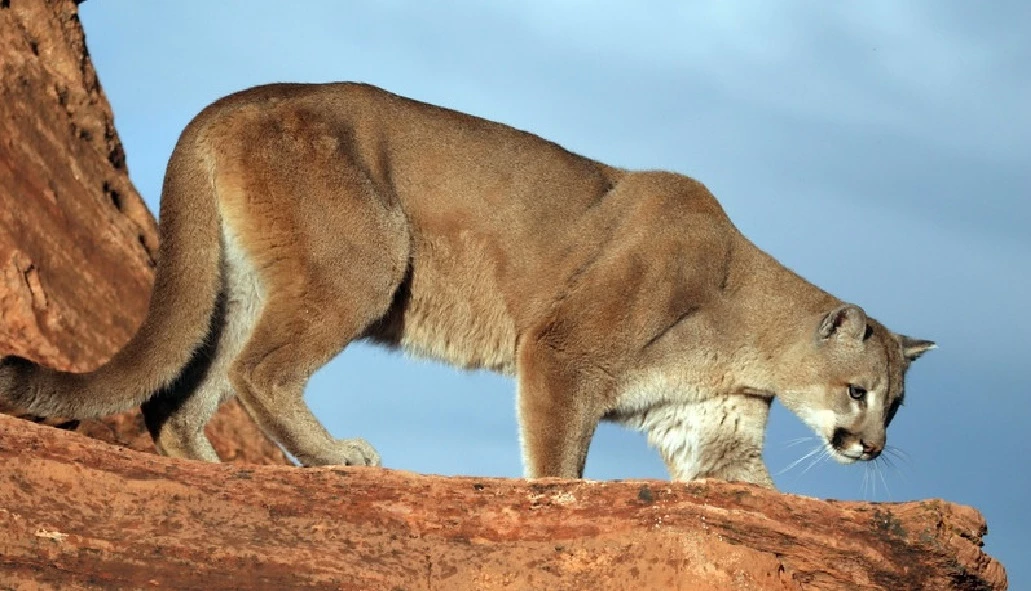
Lynn Chamberlain, Utah Division of Wildlife Resources
Scientific Name
Puma concolor
Identification
Habitat
Behavior
Transcript
Hi, I'm Ranger Lori and I have just a few minutes to share with you a little glimpse into the life of Grand Canyon’s top predator, the mountain lion. Not only is the mountain lion Grand Canyon’s top predator in every habitat through this park, it’s also serving a valuable role. Its helping to maintain the ecological balance throughout this wilderness ecosystem.
Now, the lion, as our top predator in the park, is also a skillful hunter. Weighing up to 200 pounds and measuring in length from 6 to 8 feet long. This is an animal that is capable of running 45 miles per hour, and leaping 15 feet straight up in the air. Wow! It has wonderful senses; great hearing, spectacular vision. In fact, its vision is so good, it can see with 1/6 of the light that you and I need at night. It’s a wonderful nocturnal vision. Don’t let that stop you from going on a night walk while you’re here, though. They have tremendous weapons as well. You can see, cats have sharp retractable claws, and powerful teeth. In fact, you can tell by looking at the skull of the mountain lion, this is a true carnivore. We don’t have molars, we only have carnassials, these are designed to slice meat up whole and swallow it down. This is a nocturnal animal, or a corpuscular animal, that means it hunts in the twilight. It uses silence, stealth and stalking to capture its food, typically by ambush. There’s a lot of dining options here at Grand Canyon National Park, both for people and for mountain lions. Mountain lions could start with an hors d'oeuver, like say, a fox, or a ringtail, or even a javelina or wild turkey. But, that’s just an hors d'oeuver, they move onto a bigger course, something like our mule deer, our elk, or even bighorn sheep. Not an easy thing to do. Their food is 4 or 5 times bigger then they are. And their food – is armed. They’ve got weapons and fight back. Hoofs and antlers and horns that can crack skulls, puncture lungs and break ribs. This isn’t something we have to deal with. In fact, when we wake up in the morning, and open the fridge and reach for the yogurt, yogurt is not usually trying to kill us in the morning. So, it’s a good thing mountain lions are such skillful hunters. Mountain lions are playing a valuable role, here at Grand Canyon National Park. They’re helping maintain the ecological balance throughout this wild ecosystem. As they feed upon herds of mule deer and elk, they help keep those populations stable, which in turn, keeps all of the vegetation stable, providing habitat and home for everything underneath it. Now, it’s not just what mountain lions eat, but, it’s what they don’t eat, that keeps them such a valuable player here.
Visit our keyboard shortcuts docs for details
Mountain lions (Puma concolor, also called cougars or pumas) inhabit the canyons and forests of the park, and are the region's only remaining large predator. Learn more about this secretive animal's behavior, and habits. Scene description: The entire video is of a of young ranger in uniform. She has shoulder-length hair, and is standing in a forest in front of a large juniper tree with twisted branches. More Information |
Last updated: December 18, 2022
